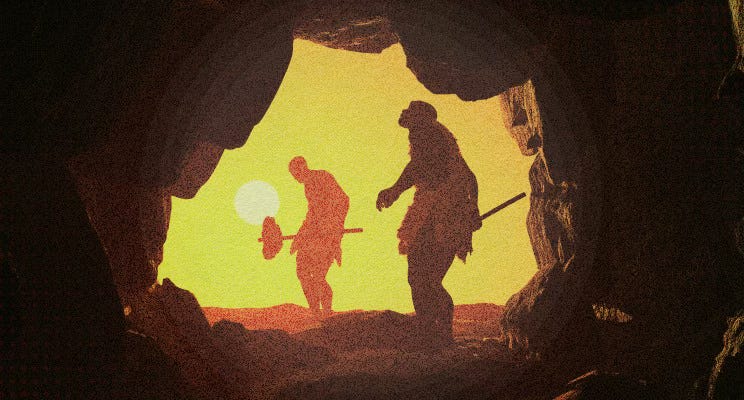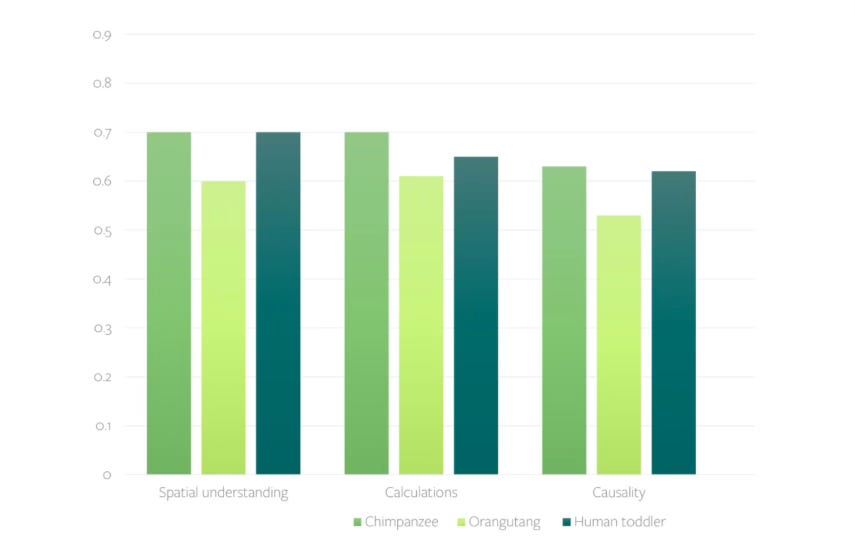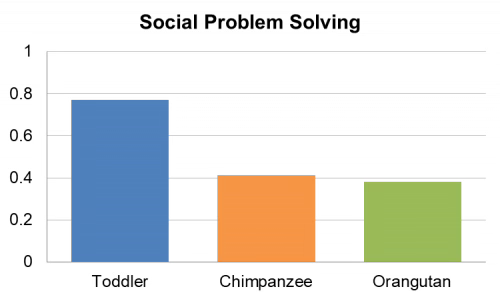The Surprising Science Behind Teamwork and Storytelling
We were dumber and weaker than Neanderthals, yet we're the ones who thrived — thanks to two underrated superpowers. As we enter a new stage of AI, they've never been more important.
Picture a Neanderthal in your mind.
If you’re like most people, you imagined a hunched-over, dim-witted brute. He’s probably carrying a giant club and hairier than Steve Carrel in The 40-Year-Old Virgin. That’s the popular depiction of Neanderthals — our close cousin who was just too dumb to survive.
But what if I told you that Neanderthals—our hominid cousins with whom we co-existed in Europe for several thousand years— were superhuman? Research over the past few decades has revealed that Neanderthals were not only much stronger than homo sapiens, they were also smarter. Their brains were literally 15 percent larger.
They built fires, cooked food, made clothing, and drew cave paintings. They were like the hairy lost Hemsworth brother who eschewed Hollywood for MIT.
As Rutger Bregman explains in his book Humankind, “We may boast a superbrain, but they packed a gigabrain. We have a MacBook Air, and they got the MacBook Pro.”
So, how did humans become the dominant species on Earth? Did we win a giant, hominin war against all odds?
The answer is less dramatic than a 300-style showdown but more meaningful. We overcame the odds to become the most dominant species on earth thanks to two intertwined superpowers: teamwork and storytelling.
I’ve been thinking about the unlikely victory of early humans a lot this past week. As we enter 2025, our tech overlords are already predicting that AGI and “virtual employees” — smarter and faster than us homo sapiens — are imminent, thanks to OpenAI’s o3 release. But we often underrate what makes humans special: our ability to work together and learn from each other. If we want to reach our potential, crush our goals, and future-proof ourselves against the machines, we need to maximize our teamwork and storytelling superpowers.
In this week’s newsletter, I want to explore the science behind those superpowers — and how we can maximize them this year.
“Ultra-social learning machines”
In the mid-2000s, a team of German researchers designed a set of 38 tests to compare the intelligence of chimpanzees and orangutans with human toddlers. The tests looked at core components like spatial understanding, calculation, and causality.
I have a toddler, and while he makes some truly bizarre decisions — smashing peaches into toy cars and trying to plug his Elizabeth Warren action figure into the outlet — I would have bet he’s brighter than an orangutan and chimpanzee. As it turns out, that’s not the case. Shockingly, the human subjects scored no better than the orangutans and chimpanzees.
However, the researchers also tested a fourth skill: social learning. And we humans dominated.
As Bregman explains, human beings are “ultra-social learning machines,” built with unique features that make it easier for us to trust others and form teams:
We blush, which shows others what we think and builds trust.
We have whites in our eyes, which lets others follow our gaze.
Unlike Neanderthals, we have a smooth forehead, allowing for subtle non-verbal communication via our eyebrows.
Most importantly, our wide vocal range allows us to form complex sentences, use symbolic language, and pass on lessons to each other through stories. This has provided a massive advantage to our species, and a thought experiment from anthropologist Joseph Heinrich shows us why.
Storytelling and teamwork
Imagine a scenario in which there’s a tribe of humans and a tribe of Neanderthals. For dramatic effect, let’s say that 1 in 10 Neanderthals were likely to invent something important—like a fishing rod on their own, while only 1 in 1,000 humans could do the same—so the Neanderthals are 100 times smarter.
But then, let’s say each Neanderthal only has a social group of one to teach how to fish, while each human can teach a social group of ten. By Heinrich’s calculations, only 1 in 5 Neanderthals would learn how to fish in a lifetime. But 99.9 percent of humans would learn the skill, having eventually learned it from someone else.
How exactly did we pass along information so well from generation to generation? After all, the earliest writing didn’t appear until 5,500 years ago in Mesopotamia. Literacy only became common in the last few hundred years. Most people weren’t learning from textbooks and memos. So how did we not only learn how to fish but also make boats and sail across the world?
Around 200,000 years ago, we developed a unique vocal range that gave us access to distinct vowels, consonants, syllables, and even syntax, which meant we could do something very important: tell stories.
We’ve innately understood how stories pass on information for hundreds of thousands of years, and we’ve been proving it in academic research for the past 50. A 1969 Stanford study showed that students remembered 6-7 times more words when those words were embedded in a story. Over the past 15 years, neuroscience research has shown that immersive stories trigger long-term memory encoding and the release of oxytocin in the brain, which results in greater feelings of empathy and connection.
Telling stories around the campfire was how we relayed lessons about fishing, agriculture, hunting, gathering, and how to be good members of our tribe. This gave us a remarkable advantage. Hunter-gatherer tribes of 500 typically roamed in teams of 25 people. As a result, we commonly encountered other groups and shared knowledge. As Bregman notes in Humankind, this likely allowed us to survive the last ice age, whereas Neanderthals could not.
Popular culture loves to galvanize the lone genius, the rugged individual, the isolated visionary making magic on his own. Many of us imagine that our intelligence or technical skillset is our most valuable asset in business and life.
But that couldn’t be further from the truth. As individuals, our capabilities are limited. But as a team that learns from each other? We’re unstoppable.
Unlocking your storytelling superpowers
Think about three things you’ve learned in the past week. Did you learn them through a memo or a story? Chances are, it’s the latter.
Now, think about the last time you bonded with a coworker. Did you feel closer because you exchanged slide decks? Or did you start to bond that one day when you traded stories about your lives?
I’m guessing it wasn’t salesdeckv7FINALFINAL.ppt that did it.
If you’re like most people, you’re starting this year with a laundry list of things you want to accomplish. And after half a decade spent trapped behind a Zoom screen, it’s easy to feel like you need to do it alone.
If you want to make one personal investment this year, I challenge you to Invest in your storytelling skills and make a concerted effort to communicate through stories with your team.
Neanderthals and ChatGPT may get the better of us one-on-one, but nothing can beat us when we work together.
Recommended Reads
Burned Out? Start Here. (Ezra Klein / NYT): An incredibly useful podcast (and article!) on how to escape burnout, in conversation with Four Thousand Weeks author Oliver Burkeman. Listening to this dampened my annual post-New Year’s-back-to-work panic attack by at least 40%.
EnronAI (Benjamin Riley / Cognitive Resonance): It’s hard not to believe the AI hype has spiraled completely out of control.
Why I’m Not Going Paid on Substack (Tom Pendergast / Out Over My Skis): If you’re into navel-gazing essays about writing on Substack on Substack, this one is excellent and hilarious!
I’m the best-selling author of The Storytelling Edge and a storytelling nerd. Subscribe to this newsletter to get storytelling and audience-building strategies in your inbox each week.
How I used GenAI in this post (Read this post for why I think disclosing this is important / useful):
I used Perplexity for background research that led me to the Stanford study on storytelling and memory, which honestly I’d also read before.
I used GrammarlyPro for copy-editing, but I don’t actually use any of their features that use generative AI (“make this sound more confident!”) because the suggestions are trash.







This really resonates. I truly believe in the power of Storytelling. I feel it is a way to share knowledge in a gentle, non confrontational way. Being preached at in black and white do's and don'ts can create resistance. Storytelling seems to open and relax the mind...it is no longer on the defensive and can therefore hear important messages in symbolic form.
I also feel Storytelling enables individuals to engage from their own unique perspective. One story can mean many different things to different people.
Fascinating! So I'm glad to know that the bonding, gossipy storytelling in my (over-55) community really does help us survive and thrive!